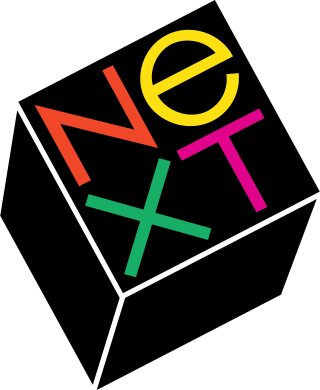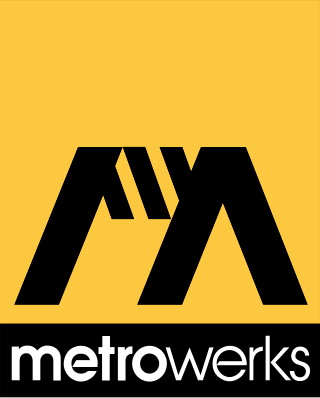Related Research Articles
Darwin is the core Unix operating system of macOS, iOS, watchOS, tvOS, iPadOS, visionOS, and bridgeOS. It previously existed as an independent open-source operating system, first released by Apple Inc. in 2000. It is composed of code derived from NeXTSTEP, BSD, Mach, and other free software projects' code, as well as code developed by Apple.

OpenStep is an object-oriented application programming interface (API) specification that was developed by NeXT Computer. It provides a framework for building graphical user interfaces (GUIs) and developing software applications. OpenStep was designed to be platform-independent, allowing developers to write code that could run on multiple operating systems, including NeXTSTEP, Windows NT, and various Unix-based systems. It has influenced the development of other GUI frameworks, such as Cocoa for macOS and GNUstep.

GNUstep is a free software implementation of the Cocoa Objective-C frameworks, widget toolkit, and application development tools for Unix-like operating systems and Microsoft Windows. It is part of the GNU Project.
Carbon was one of two primary C-based application programming interfaces (APIs) developed by Apple for the macOS operating system. Carbon provided a good degree of backward compatibility for programs that ran on Mac OS 8 and 9. Developers could use the Carbon APIs to port (“carbonize”) their “classic” Mac applications and software to the Mac OS X platform with little effort, compared to porting the app to the entirely different Cocoa system, which originated in OPENSTEP. With the release of macOS 10.15 Catalina, the Carbon API was officially discontinued and removed, leaving Cocoa as the sole primary API for developing macOS applications.
In computing, cross-platform software is computer software that is designed to work in several computing platforms. Some cross-platform software requires a separate build for each platform, but some can be directly run on any platform without special preparation, being written in an interpreted language or compiled to portable bytecode for which the interpreters or run-time packages are common or standard components of all supported platforms.
In computer programming, an application framework consists of a software framework used by software developers to implement the standard structure of application software.

The Standard Widget Toolkit (SWT) is a graphical widget toolkit for use with the Java platform. It was originally developed by Stephen Northover at IBM and is now maintained by the Eclipse Foundation in tandem with the Eclipse IDE. It is an alternative to the Abstract Window Toolkit (AWT) and Swing Java graphical user interface (GUI) toolkits provided by Sun Microsystems as part of the Java Platform, Standard Edition (J2SE).

Macintosh Programmer's Workshop (MPW) is a software development environment for the Classic Mac OS operating system, written by Apple Computer. For Macintosh developers, it was one of the primary tools for building applications for System 7.x and Mac OS 8.x and 9.x. Initially MPW was available for purchase as part of Apple's professional developers program, but Apple made it a free download after it was superseded by CodeWarrior. On Mac OS X it was replaced by the Project Builder IDE, which eventually became Xcode.
CodeWarrior is an integrated development environment (IDE) published by NXP Semiconductors for editing, compiling, and debugging software for several microcontrollers and microprocessors and digital signal controllers used in embedded systems.
Object Pascal is an extension to the programming language Pascal that provides object-oriented programming (OOP) features such as classes and methods.
MacApp is the object oriented application framework for Apple Computer's discontinued classic Mac OS. Released in 1985, it transitioned from Object Pascal to C++ in 1991's version 3.0 release, which offered support for much of System 7's new functionality. MacApp was used for a variety of major applications, including Adobe Photoshop and SoftPress Freeway. Microsoft's MFC and Borland's OWL were both based directly on MacApp concepts.

The Magic User Interface is an object-oriented system by Stefan Stuntz to generate and maintain graphical user interfaces. With the aid of a preferences program, the user of an application has the ability to customize the system according to personal taste.

Rhapsody is an operating system that was developed by Apple Computer after its purchase of NeXT in the late 1990s. It is the fifth major release of the Mach-based operating system that was developed at NeXT in the late 1980s, previously called OPENSTEP and NEXTSTEP. Rhapsody was targeted to developers for a transition period between the Classic Mac OS and Mac OS X. Rhapsody represented a new and exploratory strategy for Apple, more than an operating system, and runs on x86-based PCs and on Power Macintosh.

Metrowerks was a company that developed software development tools for various desktop, handheld, embedded, and gaming platforms. Its flagship product, CodeWarrior, comprised an IDE, compilers, linkers, debuggers, libraries, and related tools. In 1999 it was acquired by Motorola and in 2005 it was spun-off as part of Freescale, which continues to sell these tools. In 2015, Freescale Semiconductor was absorbed into NXP.
The Visual Component Framework (VCF) is an abandoned open source project for development under Microsoft Windows and Apple Macintosh that is distributed under the BSD license. It is an advanced C++ application framework that makes it easier to produce GUI-based C++ applications. The framework is C++ design and has built in support for rapid application development. The framework is designed to be portable over multiple platforms and compilers.

The architecture of macOS describes the layers of the operating system that is the culmination of Apple Inc.'s decade-long research and development process to replace the classic Mac OS.
Think C, originally known as LightSpeed C, is an extension of the C programming language for the classic Mac OS developed by THINK Technologies, released first in mid-1986. THINK was founded by Andrew Singer, Frank Sinton and Mel Conway. LightSpeed C was widely lauded when it was released, as it used the Macintosh user interface throughout and was extremely fast. It quickly became the de facto C enviorment on the Mac, and the related Think Pascal quickly did the same for Object Pascal development.
A PIGUI package is a software library that a programmer uses to produce GUI code for multiple computer platforms. The package presents subroutines and/or objects which are independent of the GUIs that the programmer is targeting. For software to qualify as PIGUI it must support several GUIs under at least two different operating systems. The package does not necessarily provide any additional portability features. Native look and feel is a desirable feature, but is not essential for PIGUIs.

fpGUI, the Free Pascal GUI toolkit, is a cross-platform graphical user interface toolkit developed by Graeme Geldenhuys. fpGUI is open source and free software, licensed under a Modified LGPL license. The toolkit has been implemented using the Free Pascal compiler, meaning it is written in the Object Pascal language.
References
- 1 2 "The Benefits of Using PowerPlant™" (PDF). November 2005. Archived from the original (PDF) on 24 September 2015.
- ↑ Handy, Alex (15 August 2005). "Metrowerks plans to ax CodeWarrior for Macintosh". SD Times . No. 132. p. 1.
- ↑ Sellers, Dennis (2 May 2002). "CodeWarrior for Mac OS, Version 8 due May 31". Macworld .
- 1 2 Turner, Mark (March 2001). "Carbon: An Essential Element of MacOS X". MacTech . Vol. 17, no. 3. p. 58-61.
- ↑ Mark, Dave (November 1997). "CodeWarrior Rhapsody Update, Part 2 and a Quick Look at WarriorWorld". MacTech . Vol. 13, no. 11. p. 49-51.
- ↑ Mark, Dave (May 1997). "Greg Galanos and the Mac Developer's Roadmap". MacTech . Vol. 13, no. 5. p. 64-72.
- ↑ Atwell, Richard (July 2000). "Arnold goes to WWDC". MacTech . Vol. 16, no. 6. p. 110-111.
- ↑ "Middleware and Section 3.3.1". Daring Fireball. 30 April 2010.
- ↑ "PowerPlant Frameworks". SourceForge . 2 January 2014. Retrieved 24 August 2021.
- ↑ Stat, Nick (12 October 2019). "Why macOS Catalina is breaking so many apps, and what to do about it". The Verge . Retrieved 24 August 2021.